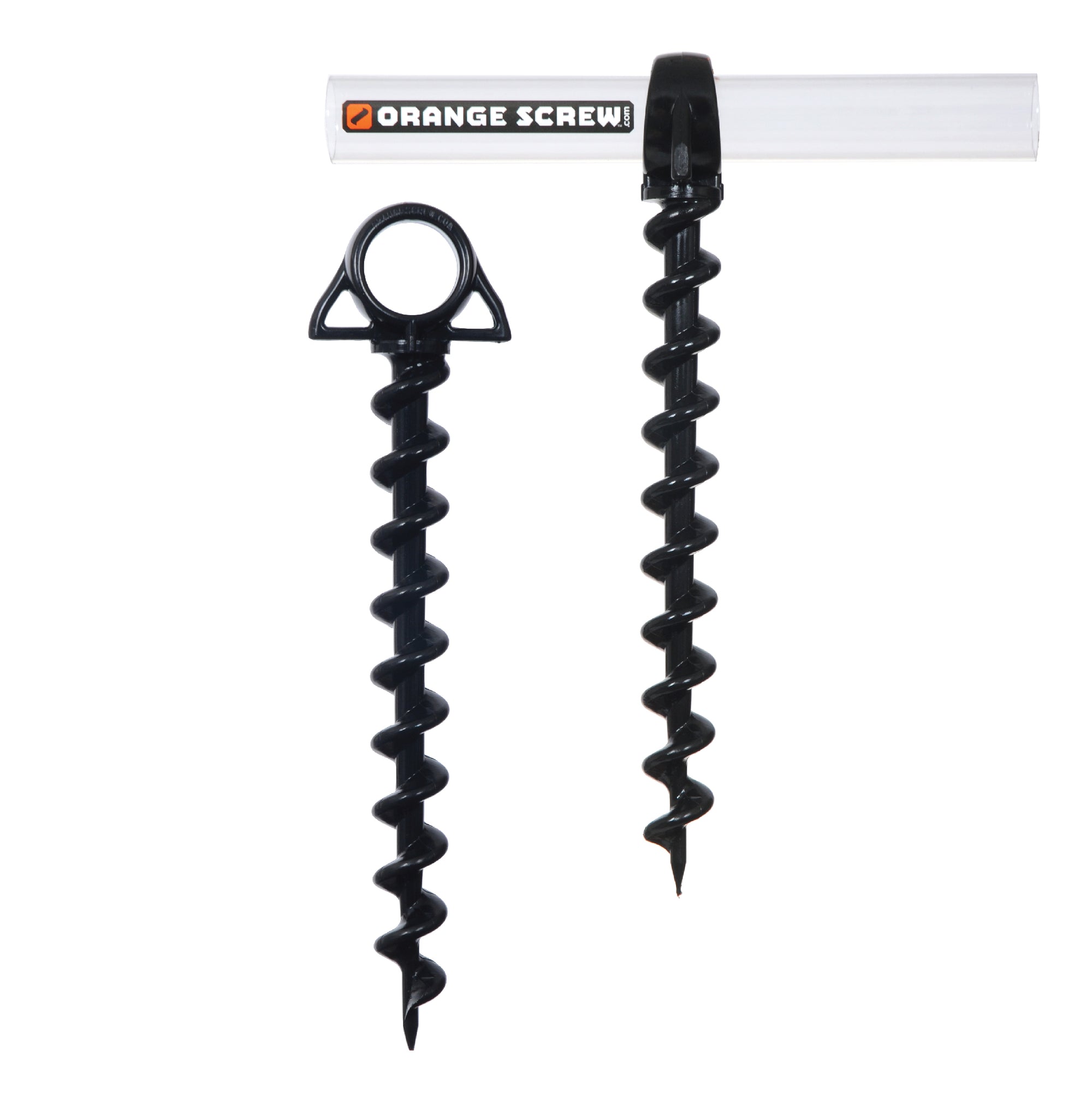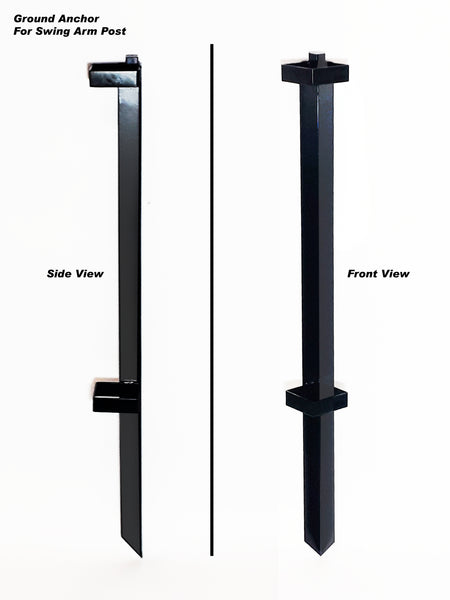Understanding the Various Options of Ground Anchor Systems for Different Applications
Understanding the Various Options of Ground Anchor Systems for Different Applications
Blog Article
Understand Why Ground Anchor Is Essential for Safety and Durability
Ground anchors are a crucial part in construction, giving important assistance and security for different frameworks. Their ability to transfer loads efficiently to the ground not only boosts architectural honesty yet additionally plays a significant duty in mitigating dangers connected with environmental elements, such as unpredictable dirt and seismic activity. Recognizing the different types and applications of ground supports can brighten their important function in guaranteeing safety and security and resilience. The ins and outs of their installment and the benefits they offer might not be right away obvious, triggering further exploration into this crucial topic.
Function of Ground Anchors in Building And Construction
Ground anchors play an essential role in building by offering vital assistance and security to frameworks. These tools are designed to move loads from a framework to the ground, making certain that structures and various other facilities continue to be protected under different problems. Ground supports are particularly vital in circumstances where soil problems are unstable or where there is a risk of lateral motion, such as on inclines or near bodies of water.
The setup of ground supports entails boring into the earth to get to steady soil or bedrock, where the supports can be safely secured. This procedure not just enhances the structural honesty of a project but additionally alleviates the dangers related to dirt disintegration and changing. Furthermore, ground anchors can be employed in momentary structures, such as building sites, where they offer essential stabilization during the building procedure.
Ground anchors additionally add to the longevity and longevity of structures by reducing the possibility of settlement and failure. Ground Anchor. By successfully distributing and handling loads, these important elements are essential in preserving security standards and guaranteeing the reliability of various construction tasks. Overall, the importance of ground anchors in building and construction can not be overemphasized, as they are indispensable to successful design practices
Kinds of Ground Supports


While various kinds of ground anchors exist, each serves certain applications and problems within building and construction projects. The most common kinds consist of mechanical supports, grouted anchors, and driven supports.
Mechanical anchors, such as development anchors, make use of a mechanical action to protect the anchor within the substrate - Ground Anchor. These are typically utilized in lightweight applications, like safeguarding components to masonry or concrete
Grouted supports, on the other hand, entail piercing a hole, putting a steel rod or cable television, and after that loading the annular space with cement. This approach is suitable for high-load scenarios, using enhanced security and resistance to dynamic forces frequently found in hefty building and construction.
Driven supports are typically installed by driving a steel rod or pipe right into the ground, making them suitable for short-lived applications such as securing scaffolding or formwork. When no longer needed., they are fast to mount and can be eliminated conveniently.
Various other specific anchoring systems consist of helical supports, which are screw-like tools made use of in numerous soil problems, and deadman anchors, which depend on the weight of a hidden things that site to provide security. Each sort of ground anchor is made to fulfill specific engineering requirements, making sure safety and architectural honesty.
Benefits of Making Use Of Ground Supports
The advantages of using ground supports in building tasks are significant, enhancing both safety and security and architectural performance. Ground anchors provide important resistance against lateral pressures, such as soil activity, wind loads, and seismic task. This resistance helps maintain the stability of structures, stopping possible failings that could result in expensive repair work or harmful circumstances.
In addition, ground supports promote the efficient transfer of tons from frameworks to the bordering soil, ensuring a balanced distribution imp source of weight. This lots transfer minimizes the danger of working out or shifting, which can jeopardize the stability of a building with time. By employing ground anchors, designers can likewise create more effective styles, as they permit slimmer structural aspects while preserving security criteria.
Additionally, ground supports are flexible and adaptable to different dirt conditions and job demands. Their installment can frequently be completed promptly and with minimal interruption to the surrounding atmosphere, making them a reliable option for many building and construction applications. Ultimately, the usage of ground anchors improves not just the sturdiness of structures but additionally adds to a more secure working environment for building workers and future residents.
Usual Applications and Makes Use Of
Numerous building and construction jobs utilize ground anchors for their performance in enhancing security and security. These functional parts are generally employed in different applications across the building and civil design sectors. One prevalent application is in keeping walls, where ground anchors provide the required assistance to avoid soil movement and preserve architectural honesty.
Furthermore, ground supports are important in safeguarding short-term frameworks, such as scaffolding and shoring systems, guaranteeing they stay secure during building and construction activities. In the world of foundation assistance, they are made use of this article to enhance existing structures, especially in areas susceptible to ground settlement or changing soil problems.
Ground supports likewise discover considerable use in incline stablizing tasks, where they assist mitigate landslide dangers by anchoring the dirt to stable rock developments. One more considerable application remains in the installation of wind turbines, where they secure the base against side forces created by wind, making certain operational safety and security and durability.
In addition, ground anchors are utilized in tunneling jobs to stabilize the surrounding ground throughout excavation. Their diverse applications highlight the essential duty ground supports play in preserving safety and sturdiness in numerous construction scenarios.
Setup Best Practices
Effective application of ground supports in numerous building projects depends upon efficient installation techniques. Appropriate installation is essential to make certain the anchors accomplish their designated purpose and keep architectural integrity gradually. Secret finest practices consist of comprehensive site analysis, which entails assessing soil problems, load needs, and ecological variables that may influence support performance.
Prior to installment, it is necessary to pick the proper sort of ground support based upon the specific application and dirt characteristics. Using high-quality products and sticking to maker specifications will improve the support's durability and efficiency. Throughout setup, make sure that the support is positioned at the correct angle and depth, as these factors significantly influence load-bearing ability.
Moreover, using appropriate tools and methods is crucial, consisting of drilling or driving methods customized to the website conditions. After installation, carrying out tons screening can confirm the support's performance and identify any kind of prospective concerns early. Regular inspections are likewise suggested to keep track of the problem of the supports and bordering soil. By following these setup finest engineers, contractors and techniques can enhance the security and durability of frameworks reliant on ground supports.

Verdict
In summary, ground supports are necessary parts in building, dramatically boosting security and sturdiness. The varied types and advantages of ground anchors, paired with their considerable applications, underscore their relevance in both short-lived and long-term structures.
The installment of ground supports involves boring right into the earth to reach steady dirt or bedrock, where the supports can be firmly anchored.The benefits of utilizing ground supports in building and construction projects are significant, boosting both security and structural efficiency.Numerous building jobs utilize ground supports for their efficiency in improving security and security.Successful application of ground supports in different building and construction jobs pivots on reliable setup practices.In summary, ground supports are necessary elements in building and construction, considerably enhancing safety and security and resilience.
Report this page